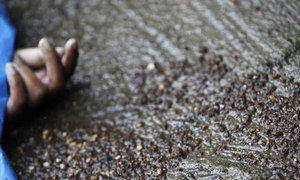 ISLAMABAD: As many as 68 journalists and media workers were
killed across the world in 2017 of whom nine were women. Last year, 112
journalists were killed of whom three were women according to the
International News Safety Institute (INSI).
ISLAMABAD: As many as 68 journalists and media workers were
killed across the world in 2017 of whom nine were women. Last year, 112
journalists were killed of whom three were women according to the
International News Safety Institute (INSI).
In 2015, 10 of the 101 journalists killed were women.
“This
is the highest proportion of women killed in comparison with their male
counterparts in the eight years since I joined INSI and it is a
particularly egregious finding in the current climate,” said INSI
Director Hannah Storm.
Some of the high profile women
killed in 2017 include Kim Wall whose body was discovered in the sea
near Copenhagen, Kurdish journalist Shifa Gardi, Gauri Lankesh who
became the most high-profile journalist killed in India in recent years
and Miroslava Breach who spent the days before her murder in March
documenting deaths in Mexico’s death war.
Afghanistan,
Mexico, Iraq, Syria and the Philippines were the five most dangerous
countries for journalists in 2017, according to ‘Killing the Messenger’,
which is compiled for INSI by the Cardiff School of Journalism.
The
number of journalists killed this year is lower than in recent years.
Of the 68 media casualties, 32 men and women died in countries
supposedly at peace such as Mexico, India and Malta.
The majority of casualties were local journalists who lived and worked where they died.
Four
citizen journalists lost their lives this year, all but one of them in
Syria where access for professional media workers continues to be
difficult and dangerous.
INSI identified nine cases where
suspects were identified, arrests made and legal proceedings initiated.
These include Peter Madsen who has been charged with the murder of Wall
and three men charged in connection with the killing of Malta’s Daphne
Caruana Galizia, an investigative journalist blown up by a car bomb in
October.
“At INSI we pay tribute to every journalist
killed doing their work, whatever their gender, ethnicity or religion.
The 68 men and women killed this year have paid the ultimate price and
every single one leaves a legacy of loss,” Storm said.